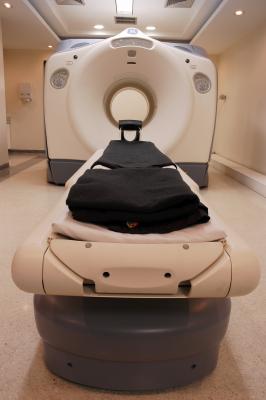
October 10, 2013 — Advanced imaging with Positron Emission Tomography (PET) scans shows promise in predicting which patients with inoperable lung cancer have more aggressive tumors and need additional treatment following standard chemotherapy/radiation therapy, according to research published online in the Journal of Clinical Oncology (JOC).
The multi-site trial, led by study author and principal investigator Mitch Machtay, M.D., University Hospitals Seidman Cancer Center, enrolled 250 patients at 60 cancer centers around the country. The National Cancer Institute funded the trial and was led by the American College of Radiology Imaging Network (ACRIN) in collaboration with Radiation Therapy Oncology Group (RTOG).
“These findings have the potential to give cancer physicians a new tool to more effectively tailor treatments for patients with locally advanced lung cancer,” said Machtay, chairman, radiation oncology, University Hospitals Case Medical Center and Case Western Reserve University School of Medicine. “This cooperative group study determined that the PET scan can show us which patients have the most aggressive tumors, potentially enabling us to intensify their treatment.”
In this study, stage III lung cancer patients had PET scans before and after a combined treatment regimen of chemotherapy and radiation therapy. They measured how rapidly tumors absorbed a radioactive sugar molecule (FDG).
The researchers found that the post-treatment scan was predictive for patients’ prognosis by identifying that patients with high levels of FDG uptake following treatment had more aggressive tumors that were more likely to recur. The researchers found that the higher the standard uptake value (SUV) for FDG in the primary tumor, the greater the recurrence rate and the lower the survival rate of patients.
The results also showed that there was a strong correlation between the radiation dose intensity and local control of the cancer, indicating that further research needs to be conducted in radiation technology for lung cancer
For more information: www.jco.ascopubs.org


 April 17, 2024
April 17, 2024 








